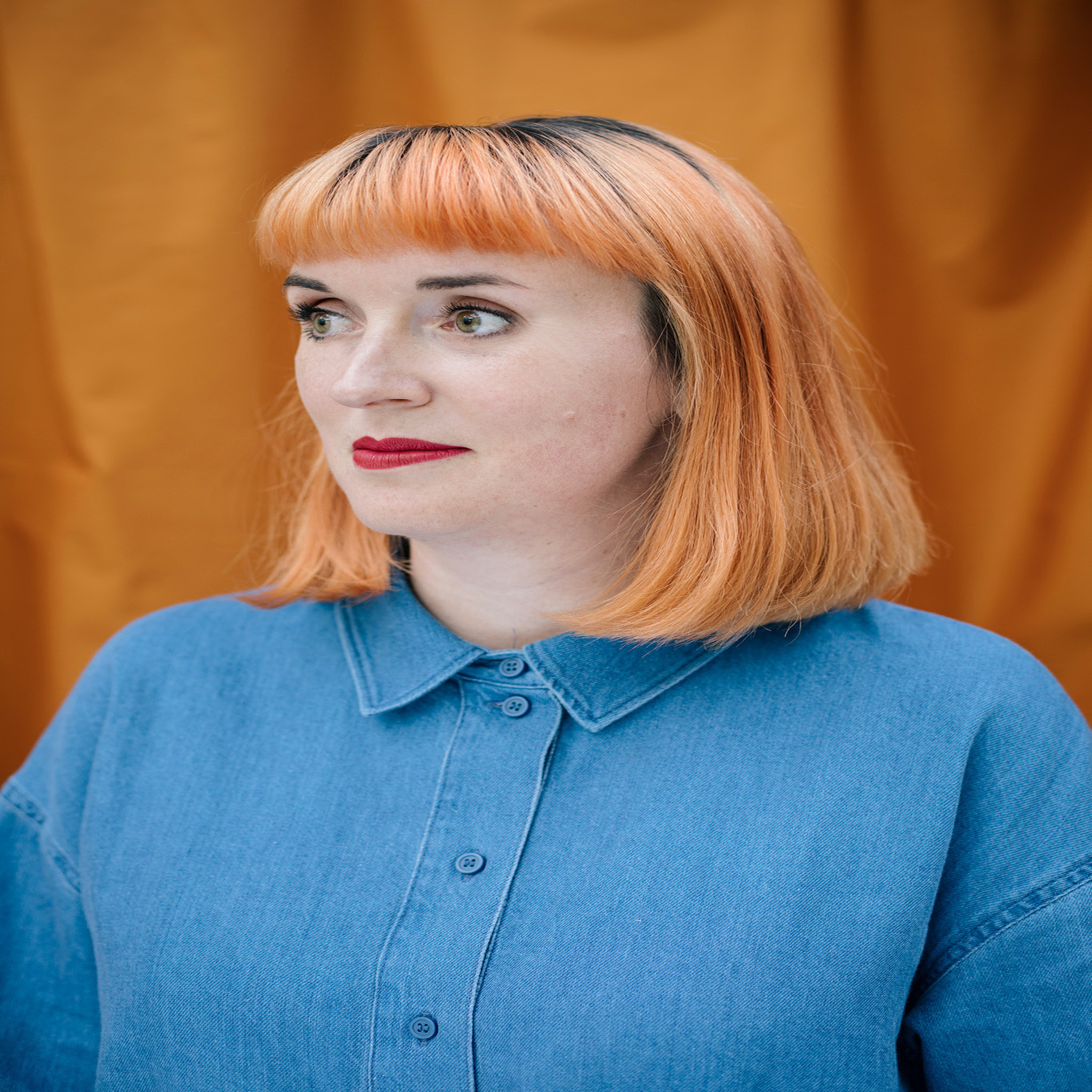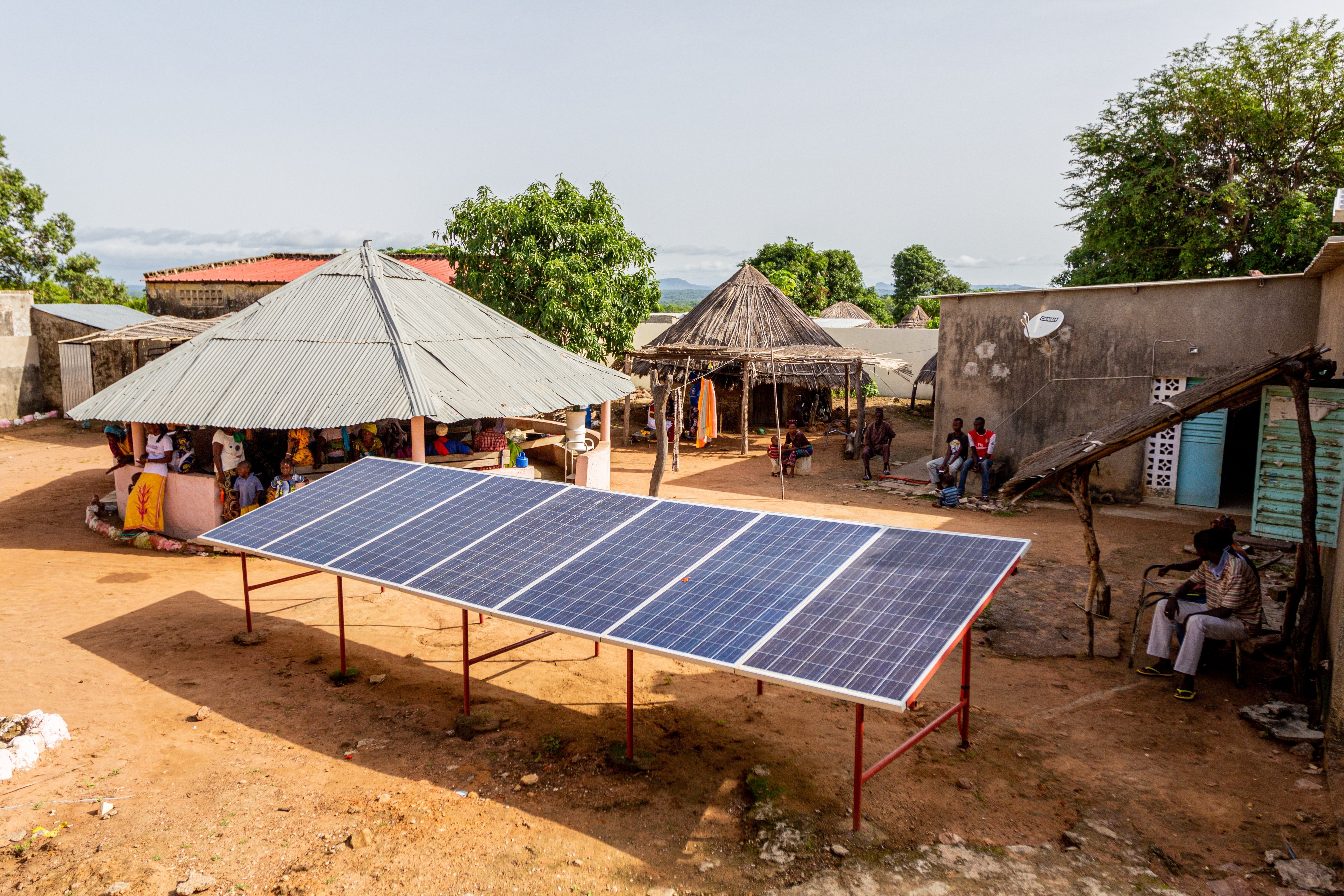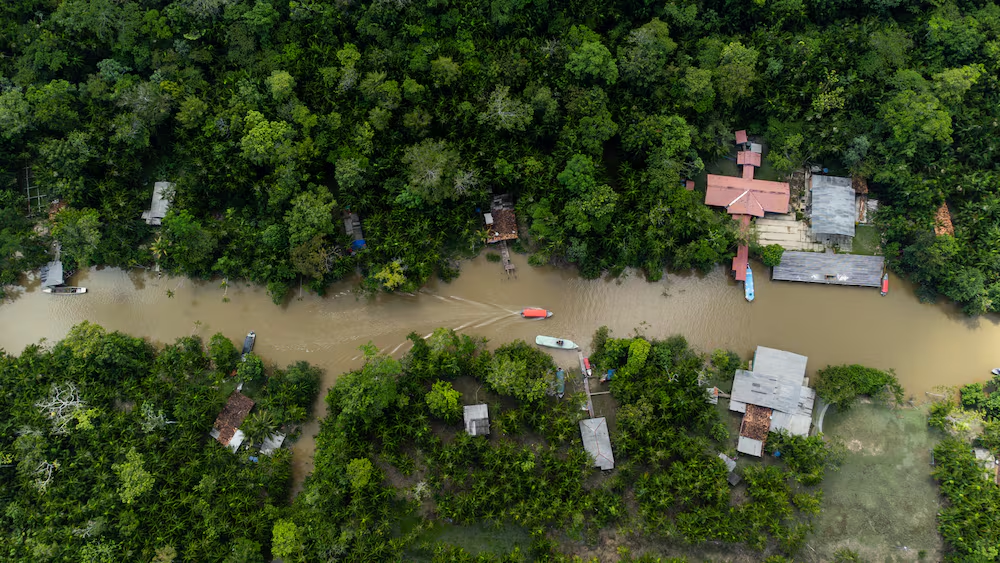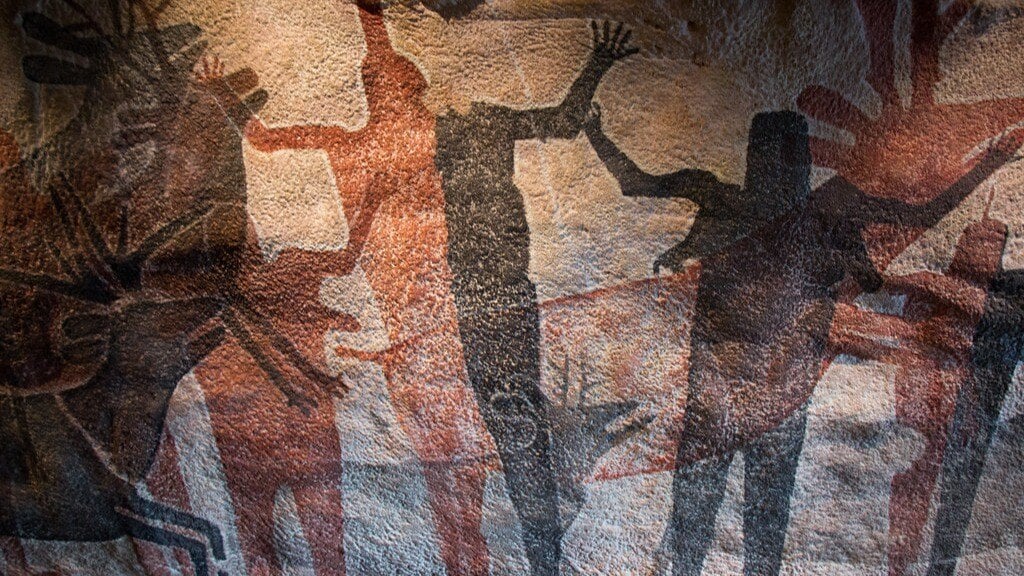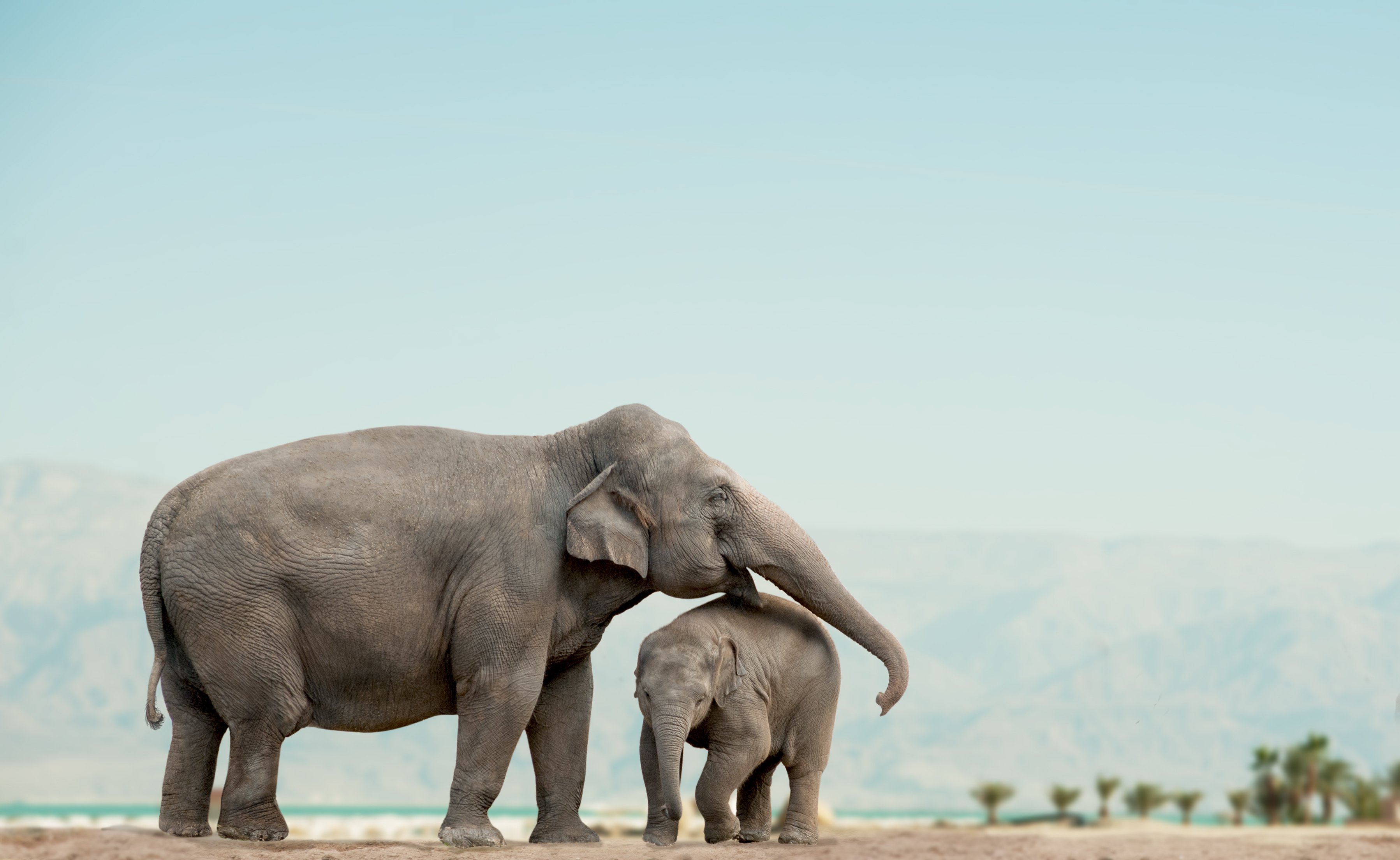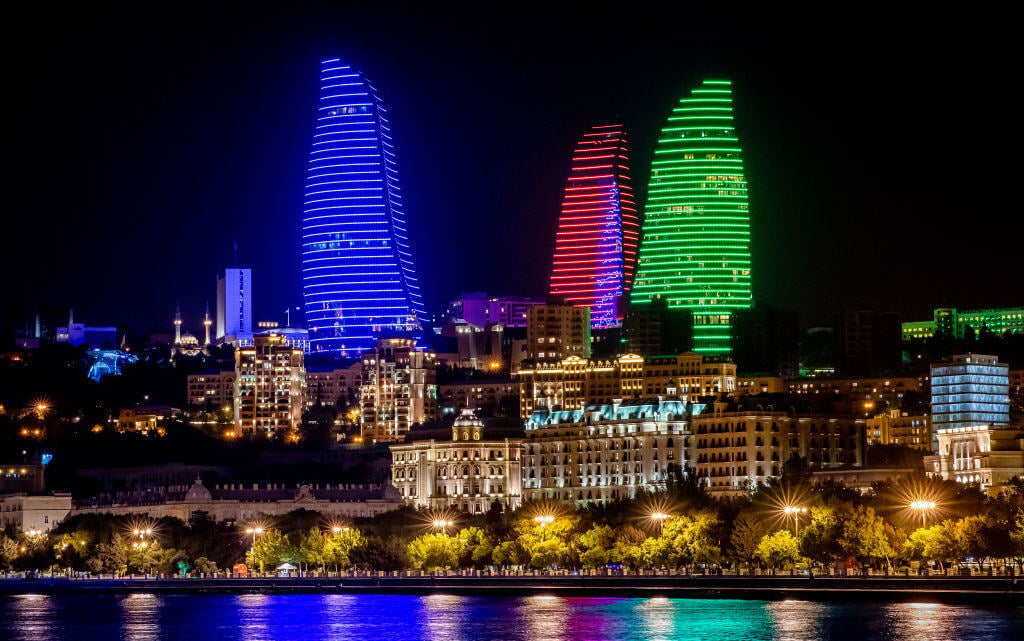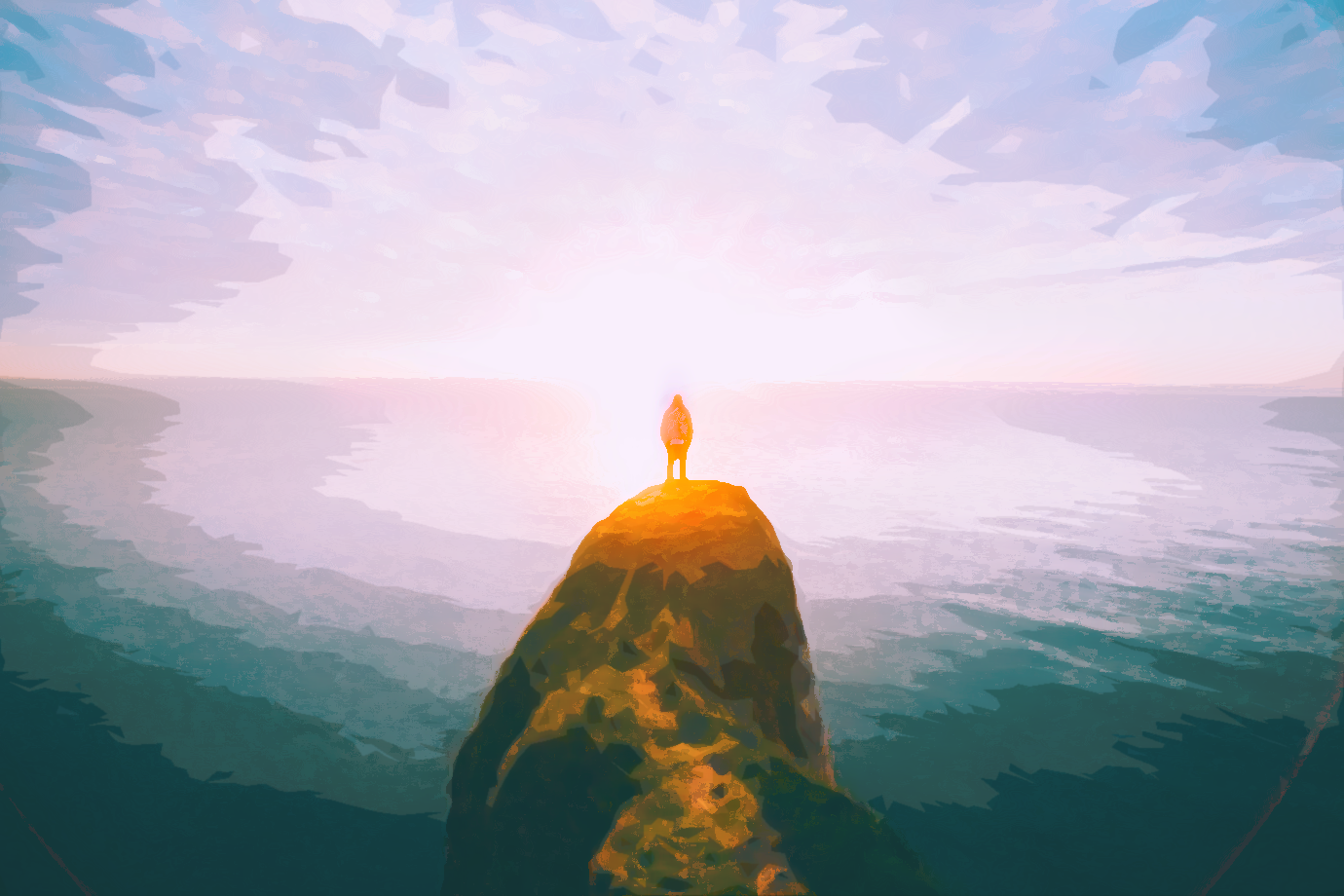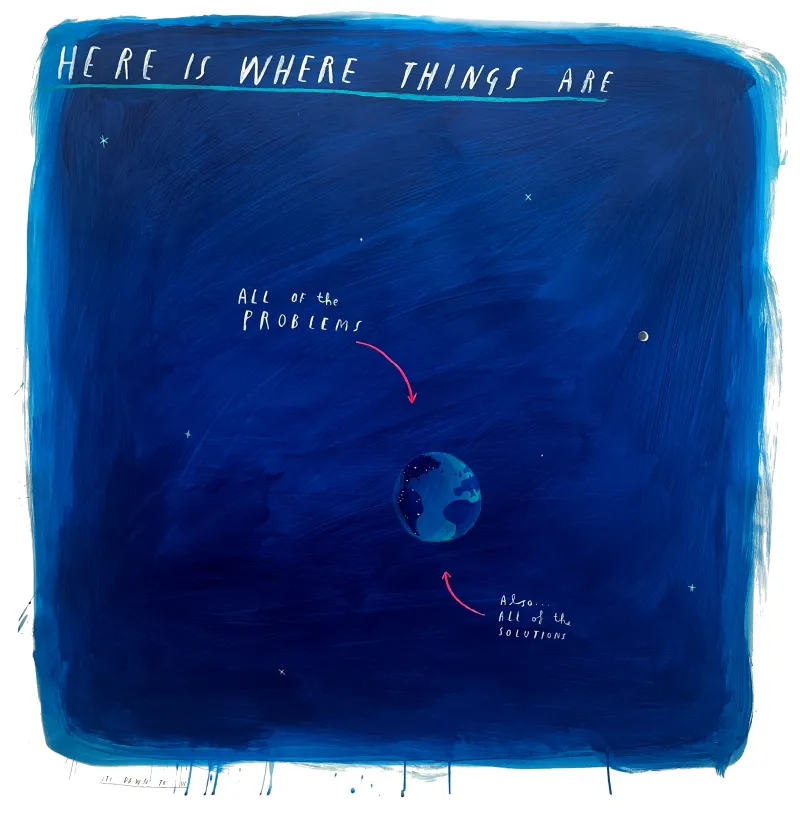162: 'Our Time On Earth' - Radical Visions for The Future by Arts & Ecology
About this episode
Welcome to another episode of Outrage + Optimism. As always, we examine issues at the forefront of the climate crisis, interview change-makers, and transform our anger into productive dialogue on building a sustainable future.
In this special episode, the Outrage + Optimism crew has teamed up with the Dartington Arts School to bring you the first episode of the school’s intriguing new podcast, Arts and Ecology. The podcast explores the nexus between art, ecology, and culture and the role creatives can play in tackling the climate crisis.
In this inaugural episode, Arts and Ecology co-host Natasha Rivett-Carnac and O + O Executive Producer Sarah Thomas discuss “Our Time on Earth,” a major multimedia exhibition currently running at the Barbican in London with co-curator Caroline Till. Till is the co-founder of FRANKLINTILL, a research agency exploring design, colour, and material innovation for a sustainable future.
You’ll also hear from two teams who collaborated on exhibition pieces. Jonathan Chippindale, CEO of the award-winning digital retail agency, Holition, and George Monbiot, writer, Guardian columnist and environmental activist bring us The World Beneath Our Feet. The piece was inspired by “The Wonders of Soil,” the first chapter in Monbiot’s latest book, Regenesis: Feeding the World Without Devouring the Planet.
Next, we hear from Anab Jain and Jon Ardern, the co-founders of Superflux, an award-winning experimental design agency creating visceral experiences that bring future possibilities into the present. Their exhibition piece, a lavish multi-species banquet, is entitled, Refuge for Resurgence.
Interview with Caroline Till on the Barbican exhibition, “Our Time on Earth”
Caroline Till starts off by sharing her childhood memories of playing in the uncultivated “wild bit” in the back of her mother’s garden. “I quite early saw nature as an opportunity for creativity,” says Till. Perhaps naturally then, she jumped at the chance to co-curate a Barbican exhibition exploring how the intersection of art, design, materials, and time can reinterpret our planet’s climate emergency.
The exhibition itself is a polysensory, kaleidoscope of multimedia perspectives, loosely organized in three sequential chapters entitled “Belong,” “Imagine,” and “Engage.” Sarah Thomas picks up the theme of ‘engaging in a mindset shift,’ evident throughout the exhibition and in Outrage + Optimism more generally. Till elaborates on the point, “We passionately believe that design, art and culture have this seductive power to help mold new mindsets and nudge new behaviours into place.”
She goes on, “Climate emergency ha[s] often been dominated by stories of…doom and gloom..that leave us with [a] sense of shame and then…paralysis.” Instead the exhibition resonates with optimism and is more of a journey, beginning with our connection as living beings within a living planet.
The second phase, “Imagine,” is the heart of the exhibition, and introduces 10 future scenarios, grounded in the warmth and interconnections established earlier. “Imagine a world in which clothing is biologically fabricated…humans retreat...or…we cherish the soil on which our lives depend,” says Till. These “provocations” are told through multidisciplinary collaborations of ecologists, scientists, digital creatives, and designers, among others.
“Engage” closes the exhibition with ten short films profiling the varied impacts of the climate emergency experienced by people today. It’s suggestive of a shift, a pathway out, again percolating with positivity, about young activists and grassroots environmental initiatives around the world.
The group finishes with a discussion on the power of storytelling, and how collective action across a multitude of approaches and disciplines is fundamental to solving the climate problem. Natasha underscores this as key to Dartington’s mission as well. Till concurs, “[this] sort of cross-disciplinary collaboration was totally key to this project…no singular approach can counteract the [climate] damage that's been done already.”
She concludes, “It's about acknowledging those intersections and combining experience and expertise. And that's where we really found..the magic happens.”
Check Notes and Resources below for more information on “Our Time on Earth” at the Barbican.
Jonathan Chippindale and George Monbiot on their exhibition piece, “The World Beneath Our Feet”
Exhibit collaborators Jonathan Chippindale and George Monbiot kick off the next section with a discussion of how they came to co-create their piece, “The World Beneath Our Feet.” While seemingly counterintuitive, Chippindale’s commercial experience in luxury, fashion, art, and technology aligned perfectly with Monbiot’s scientific and activist roots in the deep and vital soils of the planet.
Says Chippindale, “We had lots of conversations about composition, life in soil nutrients…and the notion that we have very little respect for what we walk on.” Self-avowed “Soil Evangelist” Monbiot chimes in, “Beneath a square metre of land in Britain, you could have several hundred thousand animals living there across several thousand species, 90% of which are unknown to science. It's really mind blowing…That’s where the future is.”
The pair settled on building a vision around the question, “What would it be like to be down there peering up?” The piece plays on multiple perspectives, counternarratives, and challenges to conventional forms of beauty, and respecting others一themes to be addressed in any climate solution set.
Chippindale also relates the piece to a focus on listening, rather than debate. “We don't want to drive a narrative…We didn't want to put a nuance on it. We didn't want it to be too apocalyptic. We didn't want it to be overtly positive either.”
Of course, moving to climate action is a journey, and the immersive experience of “The World Beneath Our Feet” is a wondrous step in the right direction.
Anab Jain and Jon Ardern on their exhibition piece, “Refuge for Resurgence”
In the final section, Anab Jain and Jon Ardern of experiential futures, research, and art company Superflux chat about their exhibition piece, “Refuge for Resurgence.” In it, we’re invited to an exotic multi-species banquet set at a different time on our planet.
Humans are there along with a handful of creatures, including a boar, rat, snake, and mushroom. Says Jain, “[By] giving [these creatures] a seat at the table…we are recognizing our deep interdependence with all of the species on the planet and really calling time on human exceptionalism.”
The experience is both familiar一as in a favorite fairy tale一and foreign, in that equity among all of earth’s living things is clearly on the menu. Ardern adds, “The piece is very much a symbolic representation. We're working with the mythic and the poetic.”
The point is clear however, as Ardern underscores, “We’re just part of this wider ecology and all aspects of that wider ecology are important and require one another for survival.”
A key component is the unique soundscape that accompanies the visuals. Described by Ardern as something of a “reimagined kind of Lord’s Prayer” it’s almost a love poem to the Earth and to our place within the Earth. Check out the link below to enjoy another part of their piece titled Window View.
Notes and Resources
To explore more about the interconnection between art, ecology, and culture, subscribe to the Dartington Arts School’s podcast Arts and Ecology.
Natasha Rivett-Carnac, curator, Arts and Ecology, Dartington School of Arts
The exhibit Our Time on Earth, created by Caroline Till and Kate Franklin, will be at the Barbican in London from Thursday, 5 May to Monday, 29 Aug 2022.
Caroline Till is Co-Founder of FRANKLINTILL. Her book, co-written with business partner and co-curator, Kate Franklin, is Radical Matter: Rethinking Materials for a Sustainable Future and can be purchased here or in the US, here.
Jonathan Chippindale, is CEO of Holition.
You can get George Monbiot’s latest book, Regenesis: Feeding the World Without Devouring the Planet, here. Or in the US, here.
Anab Jain and John Arden are co-founders of Superflux.
You can listen to Jain and Arden’s piece, Window View, accompanying their exhibition piece, Refuge for Resurgence, here.
To learn more about our planet’s climate emergency and how you can transform outrage into optimistic action subscribe to the podcast here.
-
Dartington Arts School
Barbican ‘Our Time on Earth’
Full Transcript
Transcript generated by AI. While we aim for accuracy, errors may still occur. Please refer to the episode’s audio for the definitive version
Tom: [00:00:12] Hello and welcome to Outrage + Optimism. I'm Tom Rivett-Carnac. This week, we extend to you an invitation to sit back and enjoy a special bonus episode. Introducing the brand new Arts and Ecology podcast, brought to you by the Dartington Art School. Thanks for being here. Hi, everyone. It's Tom here. This week we've teamed up with the folks at Dartington Art School to co-produce the first episode of their exciting new podcast, Arts and Ecology. In this episode, Sarah, our executive producer at Outrage + Optimism, together with Natasha, one of the co-hosts of the Arts and Ecology podcast get together to explore Our Time on Earth. Which is the title of a major exhibition currently running at the Barbican in London. The exhibition, which is amazing, celebrates the role of global creativity to transform the conversation around the climate emergency. On the Outrage + Optimism podcast, we've previously had solutions from guests working across the creative sectors. In particular, I think back on the discussions we had with artists, writers and filmmakers like Oliver Jeffers, Kim Stanley Robinson and Adam McKay, who've offered different views on the role of the creative industries, can play and should play in tackling the ecological crisis. Not to mention our wonderful weekly music guest contribution to this question. If you enjoy these conversations, the Arts and Ecology podcast offers a lens on the intersection of art, ecology and culture and promises an exciting and thought-provoking series, delving into some of the key questions that creatives working on an ecological crisis are facing. Be sure to check out their links in the show notes and hit subscribe. So without further ado, I'll hand you over to Natasha and the Arts + Ecology Team as they guide you through the incredible conversations with the exhibition's contributors. We hope you enjoy the range of radical visions on offer for a future that is still ours to choose. Here's the episode.
Natasha: [00:02:47] Welcome, listeners. Thanks for joining us. Arts + Ecology is a conversation about the vital role art and culture play in creating a regenerative future. This week, we interview Caroline Till, the curator of the Barbican Our Time On Earth exhibition. We also hear from artists and designers from the show. We hope you enjoy this episode. Thanks for listening.
Load MoreNatasha: [00:03:22] Caroline. Well, thank you so much for being here with us and welcome.
Caroline Till: [00:03:26] Thank you.
Natasha: [00:03:26] It's so exciting to be having this conversation. I usually start our interview by talking about what your relationship with nature was like growing up as a child. I wonder if you could speak to that a bit.
Caroline Till: [00:03:38] So I grew up in Hertfordshire, a relatively average kind of suburban market town, I suppose. My mum was a very avid gardener. You know, we didn't have a huge amount of outside space but she always put in a lot of effort to it. There was particularly, I suppose, my earliest memories. There was a bit at the end of the garden which she always used to call the wild bit so she would just leave it. Sometimes plant wildflowers or let nature do its own thing. She was probably slightly more advanced thinking about the importance of that for biodiversity and natural habitats and things. I just remember spending a lot of time in that bit and particularly I think I've always been really passionate about creativity and making. I just remember spending a lot of time making little meals out of, you know, various different leaves and things. There was always some kind of play-based creative activity going on in my mind. I think, I quite early saw nature as an opportunity for creativity and making, whether that was weaving with grass. I just have these very fond memories of spending a lot of time in this wild bit, as we called it, at the end of the garden.
Natasha: [00:05:02] Hmm. I love that image of the wild bit and the making in the wild, but I can see so much of you in that, in your work, Thank you for sharing.
Sarah: [00:05:12] Caroline, I'm really interested to hear about how the opportunity for the exhibition at the Barbican, Our Time on Earth, came about? I understand you're co-curator of it. Could you maybe speak a little bit about why and how that unfolded?
Caroline Till: [00:05:28] Yeah, sure. So we first came into contact with Luke Kemp, who is the co-director of Barbican International Enterprises, one of the two art centres within the Barbican in December of 2018. They read our book. Kate and I wrote a book called Radical Matter: Rethinking Materials for a Sustainable Future, which was sort of basically bringing together about 15 years worth of research. We've been working in material innovation and trying to support big corporations to shift towards more sustainable practices. Also in the past, founded a masters at Central Martin's Core Material Futures. Looking at the role of materiality to sort of build us a more sustainable future. Thinking about materials as the building blocks of design. If we think about materials, is extracting and how we process them and where they go at the end of life, we can have huge impact. Yeah, there was all this kind of work going on in the background and the Barbican reached out to us having read Radical Matter and invited us in.
Caroline Till: [00:06:34] I think once we showed them a bit more of the work that we were doing, they could see the breadth of our approach. We had done exhibitions before, we'd done commissioning of new work around the sustainable agenda but it hadn't necessarily been in the public domain. We've done a lot of work for private clients or for large-scale corporations. Yeah, I think the conversation started then. Then we were invited to pitch, to show how we would approach an exhibition exploring the massive topic of climate emergency. I suppose as people that are deeply, deeply entrenched in the subject matter and passionate about the role of design, art and culture. To show us other ways of being and seeing and passionate about the ingenuity that design can bring to such complex subjects. It was a dream project. Yeah, we were invited on board, I think, in January 2019 as guest curators to work very deeply alongside Luke and his team at Barbican International Enterprises. Which ended up to be a two-year-long project to guest curate what is now Our Time On Earth.
Sarah: [00:07:49] Thank you. That sounds an incredible journey. Natasha and I love the exhibition when we went to see it recently and I was really struck after coming away. Having processed it, how it would have been if I started at the end of the exhibition and walked back through to the beginning.
Sarah: [00:08:07] It struck me it wouldn't have had the same effect. I was really interested in the three stages which are the belong, imaginine, engage. Belonging is obviously an emotion. It's a feeling. Where imagine and engaged are more active. I think a lot of the conversations we have on the Outrage + Optimism podcast is around engaging a mindset shift. Could you talk maybe about the decision to structure the exhibition like that and how important you think that mindset shift is and how art speaks to that?
Caroline Till: [00:08:43] Definitely. I think because of the focus on materiality in our work at Franklin Till, the consultancy that Kate and I run together. We know that making an issue tangible brings it to life and gives it the opportunity to experience it more deeply. We also passionately believe that design, art and culture have this seductive power to help mould new mindsets and nudge new behaviours into place. We really wanted to make an emotional link between climate emergency and people's everyday lives. I think on a simple level, tell the incredible stories of the natural world in a way that hopefully resonated with people. Yeah, as you mentioned, Our Time On Earth as an exhibition is loosely told in three chapters Belong, Imagine and Engage. We wanted it to feel like a story, I suppose, and feel like a journey and to honor the power of storytelling and open with this sense of quite a meditative feel.
Caroline Till: [00:09:47] The whole ambition of the project was to take a very optimistic approach. We felt that climate emergency is a subject within the cultural sector, had often been dominated by stories of kind of doom and gloom. Often, if we've been depicting the scale of the problem very well and obviously making things tangible and visual in that way it is powerful. But it feels that often that leaves us with this sense of shame and then ultimately paralysis. You're a bit kind of, you don't know what to do next. It's something I see in students time and time again that they almost realize that actually the best thing they could do is not get out of bed in the morning because ultimately then they're not going to be creating more. That's not where we wanted to begin. We wanted to open with awe, basically to open with this sense of, oh, my goodness, we're a living being within a living planet. Isn't that just incredible? Yes. So Belong is aiming to establish and explore our deep interconnectedness with other species and sort of trying to gently tease out our place in the biosphere. It opens. We have this sort of antechamber. When you first enter the exhibition, there's just a space which is shrouded with fabric, with curtain, and there's an audio playing which is which was written by Andrew Roberts, the founder of the Bio Leadership Project, and it's spoken by Speech Debelle, a British rapper. It's inviting people to take a breath and meditate almost on their connection as living beings within a living planet.
Caroline Till: [00:11:33] I think the words say breathe and then you literally hear this kind of inhale. This slow inhalation and slow exhalation and says, breathe, and your breath comes from sea creatures and trees, just one breath shared by all living things. I think when we gave the words that Andrew wrote to Speech Debelle and she said something lovely. She said, oh, this needs to be said with a smile, which I thought was really nice you know. She obviously got what we were trying to achieve with those words. Yeah, Belong is establishing the interconnectivity and then imagine is the main body of work. I suppose it features ten works framed by ten provocations, which to be met head-on. That are urging visitors to reconsider what our future societies and communities could look like and feel like. If we were to more deeply respect and work in tune with the natural world so that each frame by these provocations, for example, imagine a world in which clothing is biologically fabricated. Imagine a world in which humans retreat, or imagine a world in which we cherish the soil on which our lives depend.
Caroline Till: [00:12:44] They all featuring often multidisciplinary collaborations. So bringing together ecologists with scientists, with digital creatives, with artists, with designers. Really trying to show a sort of multitude of approaches and acknowledge that there is no silver bullet. Then the closing chapter, the third element of the story is called Engage which is trying to sort of bring people back down to earth. Hopefully, they feel inspired and invigorated by what they've experienced and imagined. But we wanted to sort of make the point that actually climate emergency is not something that's in the future. It's happening now and it's impacting people in a very uneven way across the world. That there's some communities that are being deeply impacted, while others are having very little impact at the moment. So we commissioned a collective called Earth Issue to create stories of change, which are ten short films featuring sort of changemakers or young activists who are spearheading grassroots environmental initiatives around the world. It's showing how their communities are being very impacted by climate emergency right now but also trying to show that through collective action, through kind of coming together, we can start to counteract these issues. Then the exhibition, just as a final note, aims to close as it opens with a note of reflection and meditation with a sonic experience by Silent Studios in collaboration with artist Damon Albarn track taken from his solo album The Nearer The Fountain, More Pure The Stream Flows.
Caroline Till: [00:14:22] It's integrated with these red sound frequencies that are it's a sonic vibration that's supposed to calm sort of body and mind. So as closing with that sense of meditation.
Natasha: [00:14:36] Yeah. Thanks for walking us through. I feel like I was there again. I really enjoyed that. I was like, Oh, I enjoyed that feeling again. It was really lovely. I wonder if I could just probe a little deeper on this. You know, as you were talking, I was thinking a lot about how it felt like you really blurred these boundaries between art, design, innovation, craft, material in order to tell this story. You were more it felt like the story took precedent over any ideology or any allegiance to a particular discipline or method. It just struck me that that's something that happens in the climate space all the time because that's how you have to solve this problem, right? Is by all working together and working across disciplines but sometimes in the arts I feel like we get stuck in these little silos. That's something that we try and do a lot at Dartington, is try to get out of those silos and start working with our heart, our head and our hands. Is one of the things that we talk about. I just wondered if we could hear a bit more about how you feel that impacts, particularly things like making it more accessible for a diverse audience.
Caroline Till: [00:15:44] Yeah, I think exactly as you're saying, sort of cross-disciplinary collaboration was totally key to this project. Almost as a call to reach across boundaries and frontiers in order to create new ideas and new systems and structures. To acknowledge that no singular approach can counteract the damage that's been done already. Really, it's about acknowledging those intersections and combining experience and expertise. That's we really found that that's where the magic happens. So it was really important to bring together different disciplines and I think particularly provide platforms for ideas that felt really important. I think we can get quite caught up in the Western world with this idea of reconnecting to nature as novel. There really is nothing new about this. I think we really wanted to place emphasis on the fact that our indigenous brothers and sisters have this idea of deep connection to source and nature at the very heart of their philosophy and how they see the world. It was a really important point to have the provocation. Imagine a world in which the future is indigenous at the very heart of the exhibition. We had the privilege of collaborating deeply with an organisation called Choose Earth and a group called [00:17:10] Selvagem. [00:17:10] A group of indigenous leaders from Brazil and they create these what they call arrows. Which is a short film to basically communicate their philosophy. To show the world how they see their relationship with nature and how entrenched their philosophies are within the natural world. For me, that film is the heart of the exhibition. We're trying to establish that rather than that being seen as primitive or backward it's actually way in advance of often where our thinking is coming from. Which is what they called us actually, the people of merchandise, which I think is quite interesting and quite accurate, to be honest, on the calls.
Caroline Till: [00:17:58] And as part of the collaboration, we had this beautiful commission. So Célia Xakriabá and Sônia Guajajara, two of the indigenous leaders, wrote this letter, a love letter to the earth. That formed the basis of their commission which was then incorporated into a series of hanging banners. As such, brought to life this letter to the earth and then I will say this film piece. So I think providing a really important platform to show that the ideas that we're showcasing are not new. They're very entrenched, particularly in an indigenous culture. I guess going back to this point about cross-disciplinary collaboration. There are lots of amazing ecological thinkers that we had conversations with, like Brigitte Baptiste. The Colombian ecologist who's got the most incredible TEDx talk called Queer Nature. She just really asserts that there's nothing more queer than nature and believes that as humans we have a very binary and singular sense of identity. If indeed we're going to be able to counteract the issues of climate emergency we need to adopt a much more fluid and adaptive mindset. She's questioning if we have such binary identities of our own gender, how can we possibly adopt the fluidity that is needed for a future characterised by climate emergency?
Caroline Till: [00:19:28] These ideas are quite, I guess, abstract in some ways to some people. We were really inspired by the idea of partnering her with a design agency or a digital agency that could basically bring these ideas to life. Hence where the collaboration between the Institute of Digital Fashion came about. To create that into an experience in which the visitor is placed at the centre. There was a very similar approach with the work, the provocation. Imagine a world in which we cherish the soil on which our lives depends, which was a collaboration between George Monbiot, the ecologist and writer and Holition, another amazing digital company exploring interactive technologies. Through sort of teasing out George's incredibly deep knowledge of the role of soil in our ecosystems, we could sort of bring that to life and again, tell the story of that. Often these collaborations were about sort of telling those stories in ways, as I said, that place the visitor at the centre so that they could hopefully become meaningful and inspiring and make these ideas a bit more tangible.
Natasha: [00:20:47] Caroline, we sort of talked around this a lot but I feel like there's something at the heart of the exhibition and the work that you do and the way you frame things. Which really is about an artist's response to an ecological crisis and taking the word artist really broadly. Could you speak more to how this has influenced you and changed you? Maybe developed your ideas around that.
Caroline Till: [00:21:14] I think at the heart of this show is a sense of optimism. I think that's something that Kate and I came to the projects at the very fore. We are climate optimists. We see this the scale and the of the issue but at the same time, we want to find a constructive way through. I think something we've talked about is, is this a multimedia show? I suppose, you know, there's this sort of convergence of design which is perhaps considered a more pragmatic, problem-solving approach. There's some more artistic approaches that are perhaps about questioning, about reflecting or mirroring back where we are and where we could be. I suppose with the commonality in a way, between every single artist or designer, depending on how they define themselves within this exhibition. Is that sense of that kind of root of optimism and wanting to use their discipline to help an audience to navigate. To ask new questions or difficult questions. To project ideas that challenge us and that sort of shift us or shift our mindset. I guess I think of the work of Joanna Macy, the incredible ecological thinker and theorist we were talking about in the early stages. Her theory of the great turning that she talks about. That we are in this point of this could be the sort of greatest story of human history if we're able to sort of shift this ship. If we're able to re-navigate this ship, which is heading towards catastrophe. If we can turn this, you know, isn't this an incredible time to be alive? It helped us to frame the work by thinking about the three points that she makes in terms of the great turning, the holding actions. The activist activity that's actually halting damage and trying to sort of lessen the damage that we're making as humans. Looking at the system of the fashion industry, we have this hugely polluting, fragmented industry. If we could start to work with a biologically engineered material, we could reduce that damage. So everything is a systems-based approach. Then the third aspect of the great turning. The shift, the shift in mindset, the important shift in consciousness. I guess that that's the biggest role that we hope that this exhibition would play. Is that the idea that we are this sort of egocentric approach that we're placing humans at the top of the biosphere. Again, the thread of commonality within every work and every artist's approach within the show is trying to show how we shift from being egocentric to ecocentric, as in we place the human within the biosphere as just another species. Yeah, I think it was about really showcasing that there is so many different ways of exploring this and having a real sort of hopefully plurality of voices. But with this thread of commonality that they're all that artists and designers saw that we needed to come back to seeing ourselves as just another species within a living planet.
Natasha: [00:24:57] Hmm. Yeah. I love that idea of watching the way that artists are working together and sort of picking up on those threads and highlighting that for folks and sharing that so generously. And that's absolutely how it felt to be in the exhibition.
Sarah: [00:25:14] Thank you, Caroline. It's been an incredible experience talking to you. And I wanted to finish with the question that we usually ask on the Outrage + Optimism podcast, which is, if you could please tell us one thing you're most optimistic about and one thing you're most outraged about.
Caroline Till: [00:25:34] I think through working on this exhibition, the thing that I am most optimistic about is emerging generations. I think it's quite a youth-centred exhibition, as in the collaborators that we've worked with. Particularly we wanted to give a voice to youth activism through collaborations with people like the Earth Issue. I think whenever I come into contact with, whether it's the Earth Issue or the group of youth activists that we worked with. To get feedback on actually the writing of the captions within the exhibition. So we did a really nice workshop instigated with a company called Play Nice, who brought together various different environmentalists working in the activism space that were all essentially younger than 21. I just see that there is this real kind of can-do approach. There's a fluidity there. For example, with an Earth Issue, they're all fashion designers and photographers and documentary filmmakers and writers. They have this real kind of plurality to their skills and shifting between roles.
Caroline Till: [00:26:50] But, with this deep sense of purpose at the heart of what they're trying to do and this deep kind of care for the wider environmental agenda. So when I speak to them and the level of organisation, they are so switched on and it feels really empowering. It makes me feel old but it makes me feel simultaneously just incredibly positive. When I see, through a group, through the exhibition last week and there was a bunch of ten and eleven-year-olds. The questions they were asking were just so incredibly spot on. The thing that I guess I feel most optimistic about is younger generations coming up and how incredibly inspiring they are.
Natasha: [00:27:47] And anything you're outraged by?
Caroline Till: [00:27:50] I mean, it's probably a relatively predictable answer but I suppose I think we're living in a difficult time in terms of leadership at this point. Particularly, in this country and many other countries across the world. In terms of the leadership roles that we're seeing and the lack of focus on the environmental agenda. I guess our short-term approach in relation to that, it just seems utterly insane that we have so much evidence of the impact that we have made on the planet and where we're headed.
Caroline Till: [00:28:30] Yet there is so little emphasis on that in terms of the people in positions of power at this point in time. I would hope that if we can engage people in conversations that don't feel sort of finger-wagging and don't feel as if we're trying to restrict people's lifestyles. Although I do believe that we are going to have to start restricting elements of our lifestyle. Then we can hopefully spread the message and get people more engaged to realize actually the essence of what's important in terms of life.
Sarah: [00:29:11] Thank you. I think that's really important because I think there probably is an element of renunciation as you speak of but it's also encouraging people to see what we could do. That struck me as part of your exhibition. That I imagine for everything that we might have to reduce fossil fuels. We can imagine a world that is completely fueled by green energy and all the benefits that comes with that. So thank you. I think that's really important.
Natasha: [00:29:37] Thank you, Caroline. It's been so exciting to talk to you and it's just been such an inspiring conversation.
Caroline Till: [00:29:43] Pleasure. Thank you so much.
Natasha: [00:29:57] What an incredible conversation that was with Caroline. I really felt she spoke to the role that art and culture can play in the ecological crisis. Not just by engaging people and firing their imagination but in the way that artists and designers can use their work to provoke us to consider radical solutions to the crisis. As Caroline highlighted so clearly in the interview, this exhibition embraced a multidisciplinary approach, drawing in artists, writers and designers from all over the globe. We felt drawn to hear from a few of the artists and designers themselves for this episode. So with thanks to Caroline, who kindly connected us, I offer two invitations to our guests. First, to speak about their story behind their involvement in the exhibition and give you, our listeners a sense of the work they exhibited. Followed by their answer to the question - What is the artist role during an ecological crisis? First, we spoke to Jonathan Chippendale, CEO of the award-winning Design and Retail Agency Holition. An agency that shapes the future of consumer experiences in fashion and beauty industries by humanizing technology. And George Monbiot, writer, guardian, columnist and environmental activist whose latest book Regenesis: Feeding the World Without Devouring the Planet, explores in its first chapter The Wonders of Soil. George and Holition were paired with each other to collaborate for the exhibition. The result is a work entitled The World Beneath Our Feet.
Jonathan Chippendale: [00:31:28] I've known Caroline Till for so long that I can't actually remember when I first met her, so a considerable period of time. She just became a thing in our professional life at Holition. We've kept up over the years. She approached us and said she was creating an exhibition at the Barbican around the notion of climate change and attitudes towards ecology and would we want to collaborate. It didn't take any time at all just to say aye wholeheartedly. Yes, absolutely. It's exactly the kind of thing that we want to do. As a commercial studio, we do a lot of work in the luxury space, the fashion space and the art space. About a third of our work is work that we do more for ourselves. One of our kind of sort of unofficial mantras is we're extremely interested in technology that helps us understand more about what it means to be human and perhaps exquisite irony in that. It's a large chunk of the work that we do for organisations around dementia or refugees or mental health. Things around those big topics where perhaps technology can help communicate a narrative. Caroline's initial role was to sort of match us up with someone to collaborate with because collaboration is a very big part of this exhibition.
Jonathan Chippendale: [00:32:53] She introduced us to George. So a lot of the initial conversations that I had with George were really just listening. Just putting my ears back and hearing what he had to say and then seeing whether I could find something that we could communicate. George's mind, his passion and his enthusiasm takes you on these extraordinary elongated arcs, which start very much in the micro. We had lots of conversations about social composition, life in soil nutrients, issues around irrigation, conversations around no two patches of soil are the same anywhere in the world. Conversations around soil takes a thousand years to create. Once it's gone, it's gone. From that, he would then stretch it out into into the macro and talk about global ecommerce roots and planetary environmental issues and trying to draw that together. One of the things that struck me very deeply was this notion that we have very little respect for what we walk on. These are my words, not his but we often hear that we know more about the surface of Mars than what's under the sea. You could then extrapolate that out to say we know even less about what we walk on.
Jonathan Chippendale: [00:34:22] I kind of really felt that there was an interesting opportunity to have people go through the exhibition and come out of it with a bit of more respect. Over the things, the sort of stuff that they were just walking on. I think that that was where we started. As the studio, when we started to think creatively about how we could bring George's sort of vision and his passion to life. We were very struck with the notion of what would it be like if we were down there peering up? Whether we're peering up at us or whether we're peering up at the global economy or the world. What was the sort of life view from under the soil and everything just fell forward through that.
George Monbiot: [00:35:13] I've become a bit of a soil evangelist. I see it as perhaps our most wonderful and certainly our most neglected ecosystem. I mean, soil is just incredible. It's astonishing what's going on beneath our feet. It might not be as beautiful to the eye as a rainforest or a coral reef but it is as beautiful to the mind. Once you understand what's going on and it's just as abundant and diverse. Beneath a square metre of land in Britain, you could have several hundred thousand animals living there across several thousand species, 90% of which are unknown to science.
George Monbiot: [00:35:49] It's really mind-blowing. You know, if you're looking for a scientific discipline to get into. If you're a student listening to this, become a soil ecologist because that's where the future is. We're just beginning to learn what an amazing ecosystem this is. So that's what I've tried to convey in the Barbican exhibition and I had a lot of fun with Holition and the Barbican developing that. Just to try to sort of capture the wonder of soil. To almost to write a poetry of soil to counter these old narratives. Sort of pastoral poetry, the sort of the things which we find very beautiful but actually are highly destructive. So let's create perhaps a new culture that celebrates the world beneath our feet.
Jonathan Chippendale: [00:36:44] One of the reasons why I started Holition is, heaven's it's got worse and worse and worse and worse and worse and worse. Is that I think we're listening less and less and less and we're talking more and more and more. One of the artist's roles is to speak and I feel one of the things that we like to do is listen. The work that we do, some of it can get sort of political. Particularly when we talk about climate change or a piece we did for the United Nations. That in collaboration with Professor Helen Storey from London College of Fashion, you know about the movement of refugees.
Jonathan Chippendale: [00:37:19] These are very emotive issues but I always feel uncomfortable adding to the fire and the heat that comes out of this. I'd much rather bring people information and try and bring them evidence and facts. Then allow them to make up their own decision. I mean, the piece for the United Nations was a dress that tracked refugee movement in real-time. And visualised that data onto a dress which we made out of a tent that refugees were living in Jordan which had been damaged in a storm and was going to be pulped. We could use it. It was a centrepiece of an exhibition on big data and climate change at the Science Museum. I can remember vividly watching two people who were complete strangers looking at the dress. By this time, the dress had accumulated 68.7 million journeys and one person saw it as evidence of a need for barriers and borders and controls. You know, huge amounts, an exodus coming towards us. Someone else saw it from completely the opposite way, which was we have an obligation as human beings to help our fellow humans.
Jonathan Chippendale: [00:38:25] I think that's what we try and do. We don't want to drive a narrative. We want to support other people's narratives and allow them to take their own view. That's in some ways the approach that we took with this. We wanted to tell a story. We didn't want to put a nuance on it. We didn't want it to be too apocalyptic. We didn't want it to be overtly positive either. We just wanted it to be kind of as it is. Then people can make up their own minds about it. It probably means that we're not quite as comfortable in our role as an artist as perhaps other people are. One of the ways we operate in this agency is one of my sort of strategy team has a PhD in musicology. Particularly in that notion of how do you get information to people in a place where they're not expecting technology. In your front room you have a TV, you know what? It's going to be you you turn it on, you know how to use it. But if you stumble across technology, for example, at a museum or at an exhibition or in the high street or at a library or anywhere, and you're not expecting it. People often back away from it because they don't know how to use it or what the benefits are.
Jonathan Chippendale: [00:39:34] So how do you engage? How do you use technology? How do you hide technology? By that, if you can bring them to you, how do you tell that story? The story can be simple but I think it's got to be narrated in a way that is attractive and amenable. Otherwise, I think people drop off quite, quite quickly. In our piece with George, we try to use humour in many ways ambient beauty and humour and try to bring some of the creatures that live beneath our feet. Try to give them characters and personalities. Again, it was all about that respect. If you like or smile at something, you're less likely to tread all over it. I think those kind of things were very much in our minds. When we talk about climate change, it's important. I'm not denigrating the issue. It's so serious and it's so important that actually it can overwhelm you and consume you. We won't change people's attitudes in a heartbeat as an exhibition. It's a cumulative journey of incremental steps to get the planetary population to that point. Hopefully, what we've tried to do is just get them half a step forward.
Natasha: [00:40:51] Our next guests Anab Jain and Jon Arden, who in 2009 founded Super Deluxe. An award-winning experimental design agency that creates visceral experiences that bring future possibilities into the present. At the end of the interview, John references the sound piece that accompanies their exhibition piece, Refuge for Resurgence. Which they have kindly allowed us to play a clip from. Please check out the links in the show notes to enjoy the full version.
Jon Ardern: [00:41:19] Hi, I'm Jon.
Anab Jain: [00:41:21] Hi, I'm Anna. Refuge for Resurgence is a multi-species bank way that we say is set at a different time on our planet. It is set as a lavish banquet. A table is set and there are 14 seats around the table. There's a seat for two adult humans and a human child. Then there are seats for many other species. So there is a seat for a boar and a seat for a snake and a seat for a rat and a pigeon and a mushroom, a wasp, a raven. Essentially, each table setting we've designed not just the seating and the stools or the kind of positions. Of which the species will occupy along with the humans but also design the plates. That tell the story of the journey from human-led and eco-centric destruction towards an ecological resurgence. Then there is cutlery for each species where the humans offer food to these species. The idea really at the heart of this, in our minds, a kind of painterly, poetic approach is to draw attention to the fact that we are inviting other species and giving them a seat at the table. By giving these species a seat at the table, we are recognising our deep interdependence with all of the species on the planet and really calling time on human exceptionalism. We are saying we've spent a long time taking, taking, taking from our planet and it is time to give back. It is time to develop a humble relationship with all species, even species that we might consider pests or vermin.
Jon Ardern: [00:43:18] Well, I would add that the piece is very much a symbolic representation. We're working with the mythic and the poetic. We're not necessarily kind of imagining that, that you might get...
Anab Jain: [00:43:33] A wolf sitting next to a human child.
Jon Ardern: [00:43:38] It's about what that represents as you kind of bringing the species to the table. Saying that we are just part of this wider ecology and all aspects of that wider ecology are important and require one another for survival.
Anab Jain: [00:43:54] That's a different kind of a deconstructed home because there's a view outside a window which is a more realistic view, which is a rewilding landscape. So again, a hint at the idea that it's not a shiny feature where suddenly everything is either rewild it completely. You see remnants of history. In a way, I think something that John talks about a lot is the idea that the future is old and we are building on the sediments of what has been. Really can we recognise that we are ecologically, emotionally and economically entangled with all of the species on the planet? If we want to move to a place where we are really able to tackle and navigate the ecological crisis. We are going to have to first recognise this very important thing. That the Earth loves us back as much as we love the Earth. We develop this kind of mutual relationship, we will start caring for other species. Once we start caring, then we want to do something about it. Then we'll be able to act from the place of care and humility and in love for our planet. I really think that's such an important shift in a mindset. We even created a sort of manifesto that invites people to move from a human to a non-human perspective.
Jon Ardern: [00:45:15] So the role that we see ourselves taking with this work is. It's really giving an intimate experience of what it might mean to see the world differently. To see our part see ourselves as one part within this wider ecology. To give that form to say this is a manifestation of a change of mind and a change of heart. I think that speaks to potentially one of the more powerful roles that the artists can take within our current time. Is the translation of science but also the translation of more intangible, feeling based intuitions about our relationship with the wider world. Giving that form and giving that experience. I think that the science is super important and is very scary. I think that often it remains abstract to people. It's very easy to ignore a graph and to kind of say, well, that's just numbers and lines, plot it. Unless you are deeply embedded in that world, I don't think it necessarily touches the human soul in the same way that a piece of art or a piece of poetry or music can. I think that's what's really necessary in this time, is a change of heart. And there's a change in the way that we see ourselves and the way that we see the world. I think that all the regulations and scientific predictions won't amount to much if we don't fundamentally change the way that we see our relationship with the world. We'll just find other loopholes. You might have a regulation that says that you can't emit X amount of carbon. But if you still have an extractive mindset and if you still see humans as superior to all other species on the planet and they're just being a resource to be extracted, then we'll still we'll just recreate the same problems.
Anab Jain: [00:47:20] I would only add that we've done some research as well and we've been looking at how our minds and bodies work in an embodied way. A lot of current scientific information is presented in a very rational way. We've seen that a lot of that is not working. The instruments or the tools we have, conceptual tools we have to address these challenges are not falling short in some way. That's perhaps because of our way of relating to each other. Relating to the planet. Relating to our rivers and mountains and trees and bees and butterflies is at an emotional and embodied level. We strongly believe that our artistic practices can foreground the beauty of these relationships. Therefore create in us a sense of responsibility and a sense of wanting to leave something for future generations. I actually think of our artistic practice has a source of sort of a strong responsibility that we have. We have this. We have these tools. We have trained and learned to use these different mediums. I think we have an opportunity to really use that responsibility to affect change at a very fundamental level.
Jon Ardern: [00:48:50] We do as artists and designers. We are trained in communicating in this kind of very much more visceral and direct way and that affords a certain power. I think given the urgency of the times that requires us to use those tools, we should respect that responsibility. One of the other things that the audience would experience when they come into the space is a sound piece. Part of that soundscape is something that, depending on how we feel, we have to call it a poem or a prayer. It's something like a re-imagined Lord's Prayer as you sit down at the table. It's a kind of almost a love poem to the earth and to our place within the earth.
Various: [00:50:36] Clip from Refuge for Resurgence plays.
Natasha: [00:52:10] We hope you enjoyed this podcast. If you did, please make sure to leave a review on Apple Podcast and subscribe to make sure you never miss an episode. A special thanks to all our incredible guests Caroline Till, Jonathan Chippendale, George Monbiot, Anab Jain and Jon Ardern for taking time to talk to us. If you're in London in the next couple of months, Our Time On Earth exhibition will be running at the Barbican until the 29th of August.
Clay: [00:52:54] Hello, Outrage + Optimism listeners! This is Clay, producer of Outrage + Optimism. Thank you for joining us this week. As we shared the first episode of the Arts + Ecology podcast, we co-produced with the Dartington Art School. Thanks for joining us. Natasha gave a thank you to everyone involved but I've been missing doing the credits for the past couple of weeks and I feel like I just got to say something. I did want to give a shout-out to both Sarah Thomas, our executive producer, for recording these interviews for this episode and editing this podcast episode. Of course, thank you to Natasha Rivett-Carnac and the Arts + Ecology Team for creating the Arts + Ecology podcast, which is now available on Apple Podcasts and Spotify and other places. So go, hit, subscribe and follow. And for allowing us the opportunity to share this episode with our listeners. Oh, regular listeners might recognise Natasha's last name because Natasha and Tom have been married for 15 years. The more you know. Shout out to the Dartington Art School. What a cool place! If you're interested in Radical Visions of a Future We Might Choose, which if you're listening to me talk right now, chances are pretty high. Go to the show notes to connect with them. Give them a follow. Everything to click and connect is in the show notes, right there. We are so privileged to have listeners in over 150 countries for this podcast, and if you're thinking, okay, I can't make it to London to go visit the exhibition at the Barbican but I want to check it out.
Clay: [00:54:34] There is an opportunity for you to check out some of the art at Barbican.org.uk. Right from a phone or a computer or at home on an internet device. Do yourself a favor. Check out Our Time On Earth again at Barbican.org.uk. There's a link in the show notes I have for you there. If you can, check it out on a larger screen, something bigger than your phone. We kind of normalise looking at things on our phones and this art deserves as much space for you to experience it as you can give it. So go check it out. Dive in. Listen, watch. Look. Enjoy. Okay. Off my soapbox. Actually, wait, no, back on my soapbox. I need your attention for a second. We only have three more weeks of Outrage + Optimism podcasts before we take our little summer break. So as we've been offering up some podcasts on our podcast that can carry you through the break we're going to take soon. It does give us a little warmth inside, you know, when we know you miss us just a little bit. So while we do have over 160 episodes you can catch up on while we're away, be sure to hit, subscribe or follow to our podcast so you don't miss another episode. Three more weeks. Ok, next week, another episode coming your way. Looking forward to it. We'll see you then.
Your hosts

Christiana Figueres
 Follow Christiana Figueres on Instagram
Follow Christiana Figueres on Instagram

Tom Rivett-Carnac
 Follow Tom Rivett-Carnac on Instagram
Follow Tom Rivett-Carnac on Instagram

Paul Dickinson
Guests
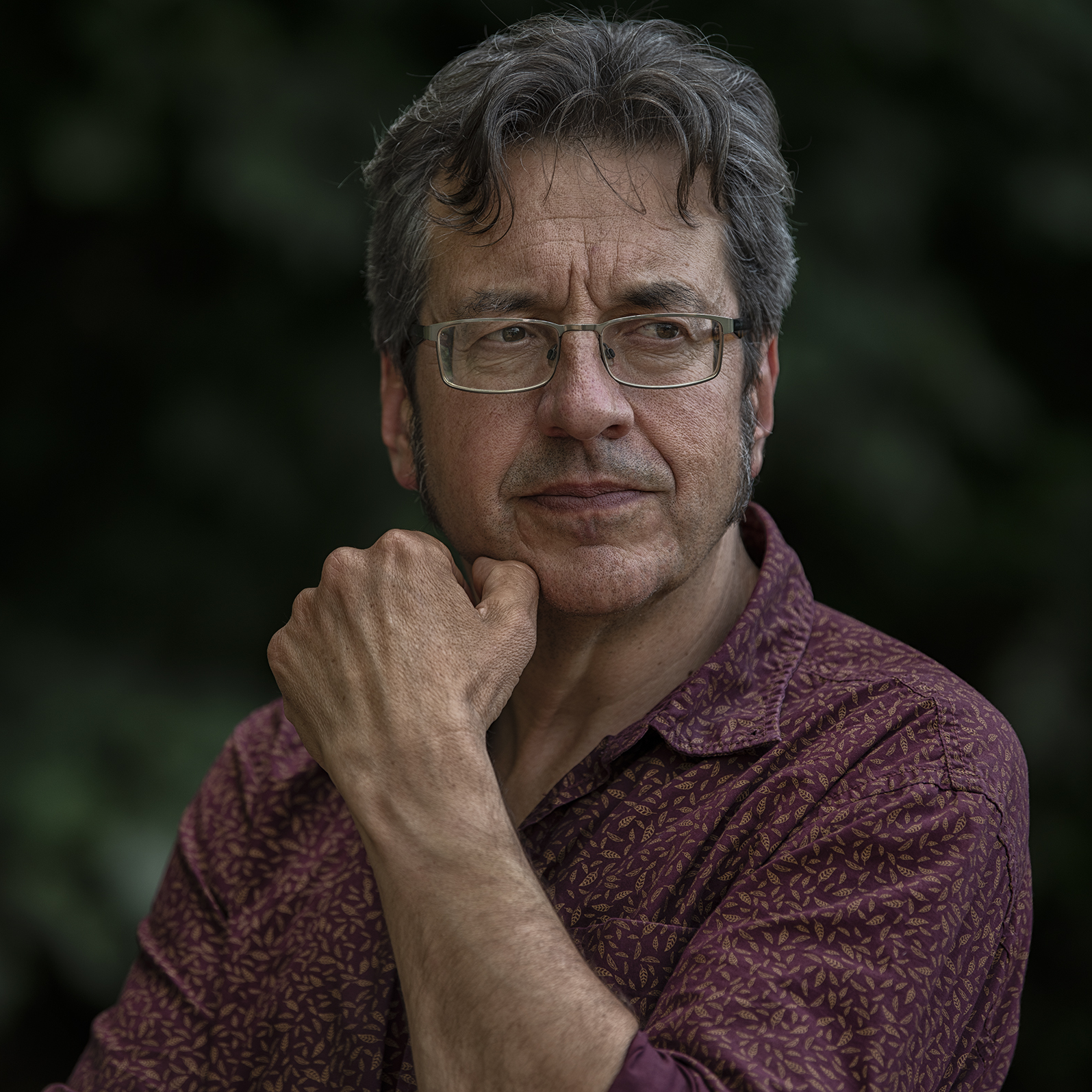
George Monbiot
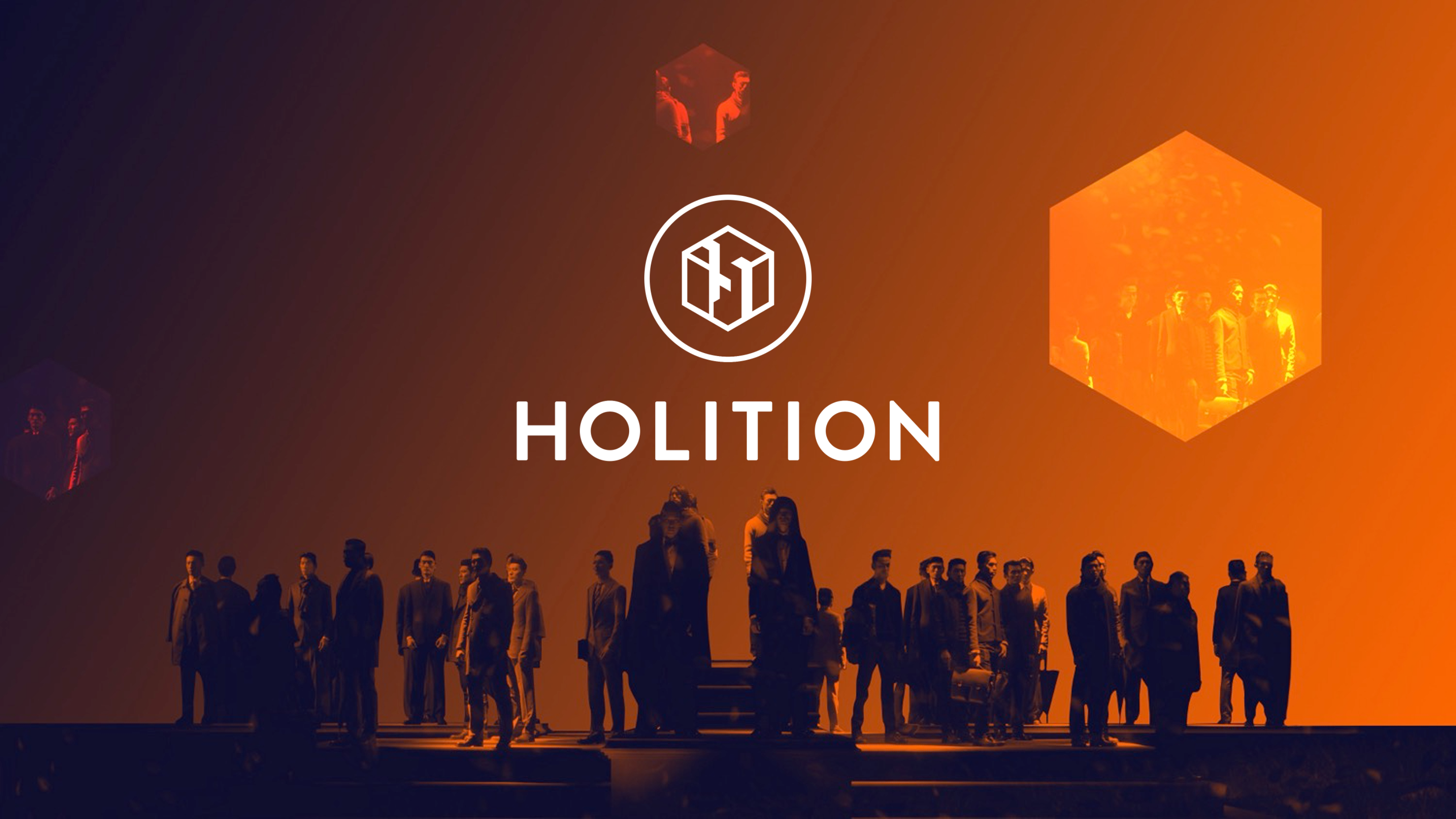
Jonathan Chippindale (Holition)
 Follow Jonathan Chippindale (Holition) on Instagram
Follow Jonathan Chippindale (Holition) on Instagram
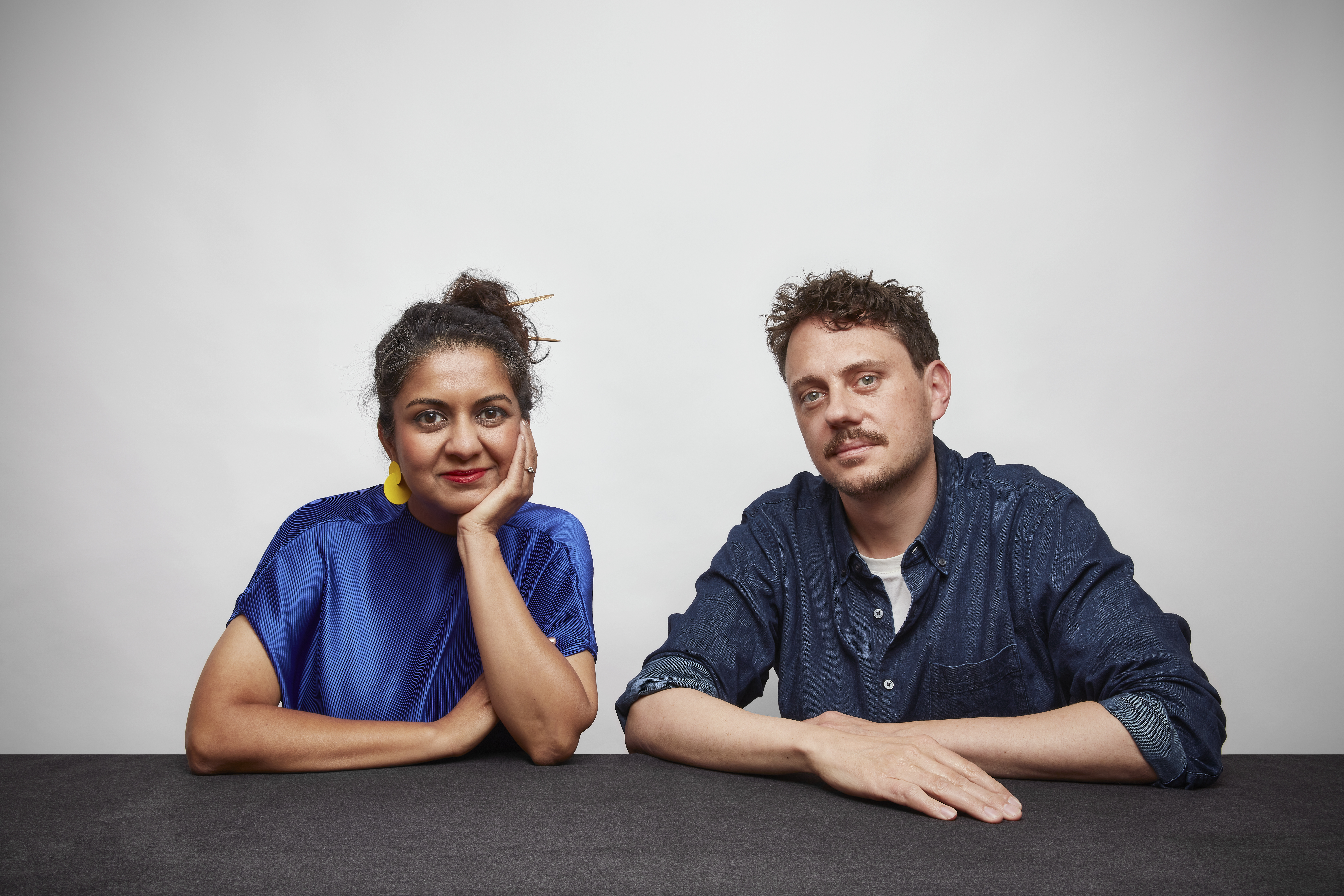
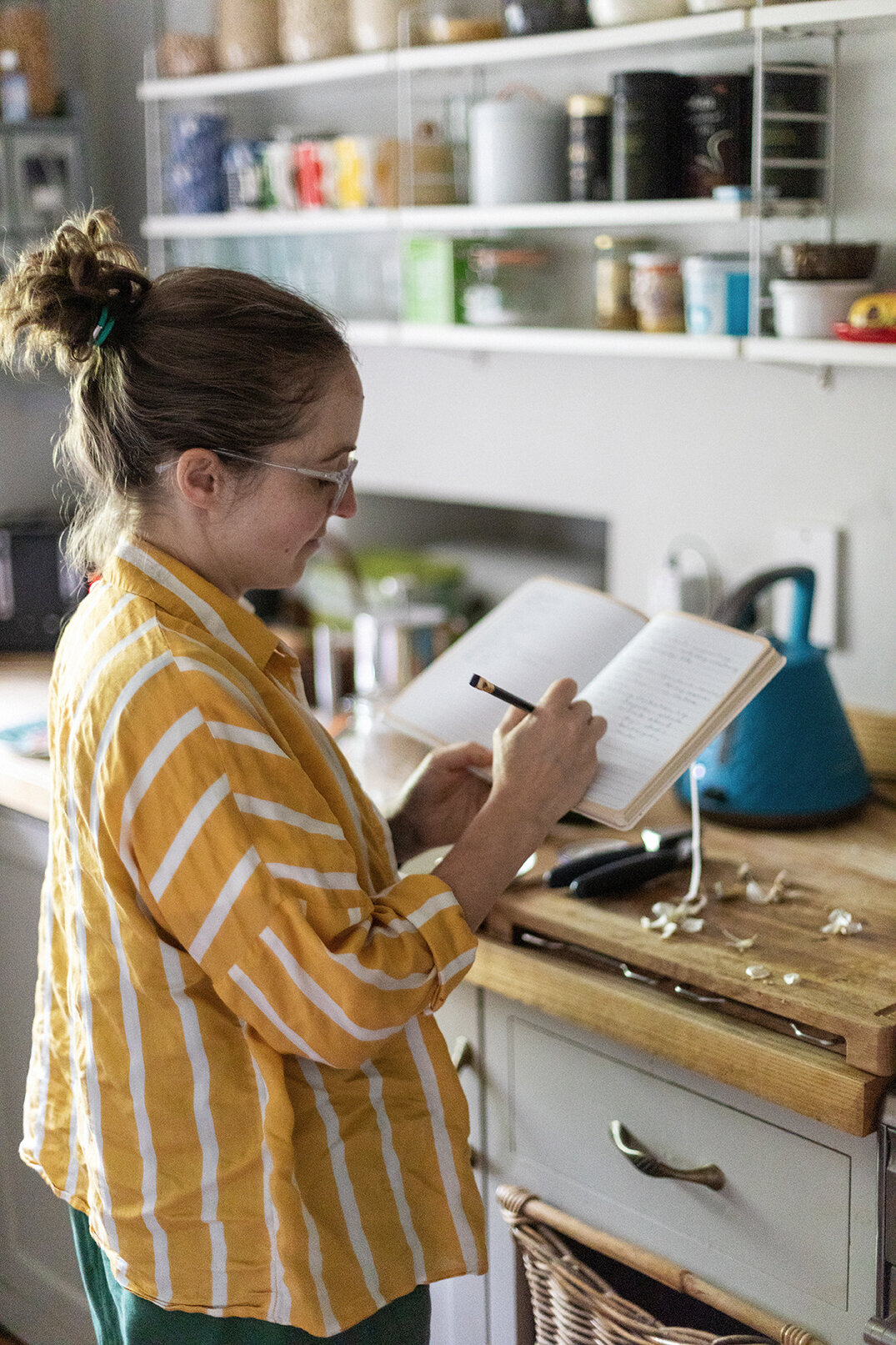
Natasha Rivett-Carnac
 Follow Natasha Rivett-Carnac on Instagram
Follow Natasha Rivett-Carnac on Instagram

